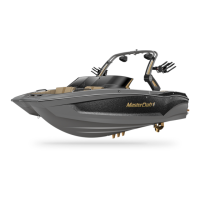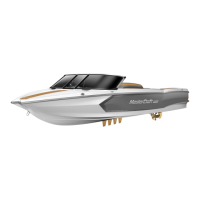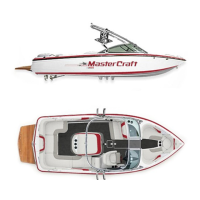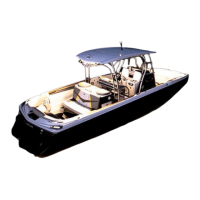Staying Afloat
It is commonly believed that someone dressed in heavy
clothing or waders will experience considerably more difficulty
staying afloat if they fall overboard. This is not true. Air trapped
in clothing provides flotation and bending the knees will trap
air in waders.
To stay aoat:
• Remain calm. Do not thrash about or try to remove clothing
or footwear. This leads to exhaustion and increases the loss
of air that may keep you afloat.
• Keep your PFD on.
• Keep your knees bent.
• Float on your back and paddle slowly to safety.
Cold Water Survival
Sudden immersion in cold water can induce rapid, uncontrolled
breathing, cardiac arrest and other physical body conditions,
which can lead to drowning. Always wearing a PFD will help
survival in rapid immersion situations.
In other situations when entry into cold water is necessary:
• Wear a PFD.
• Button all clothing.
• Cover your head if possible and enter the water slowly.
• Keep your head out of the water if at all possible.
Assume the Heat Escape Lessening Posture (HELP) position
as taught within a Coast Guard-taught safety course.
Information about HELP is available online.
Immersion in water speeds the loss of body heat and can
lead to hypothermia, the abnormal lowering of internal body
temperature. If a boat capsizes, it will likely float on or just
below the surface.
To reduce the effects of hypothermia, get in or on the boat.
Try to get as much of your body out of the water as possible.
If you can’t get in the boat, a PFD will enable you to keep your
head out of the water. This is very important because about 50
percent of body heat loss is from the head.
It may be possible to revive a drowning victim who has been
under water for some time and shows no sign of life. Cases
document instances where victims have been resuscitated
after extended periods. Start CPR immediately and get the
victim to a hospital as quickly as possible.

